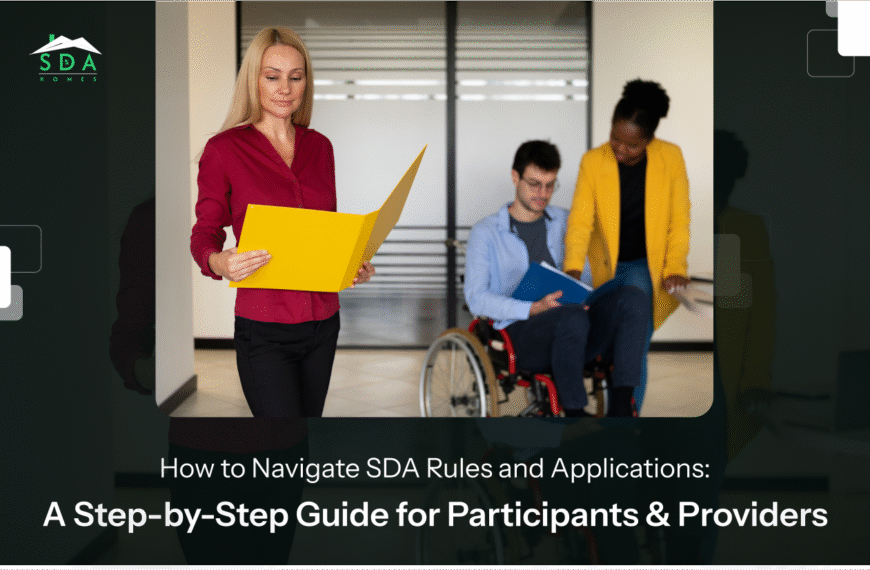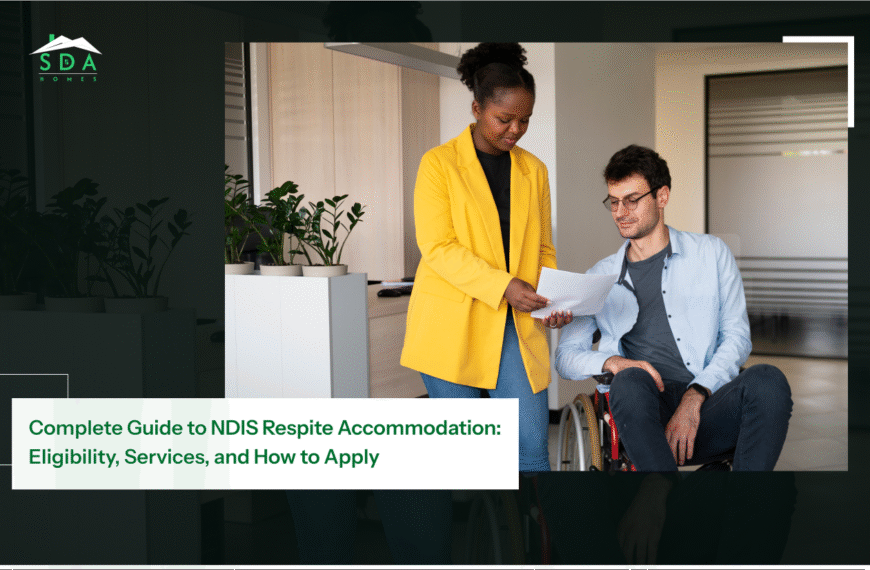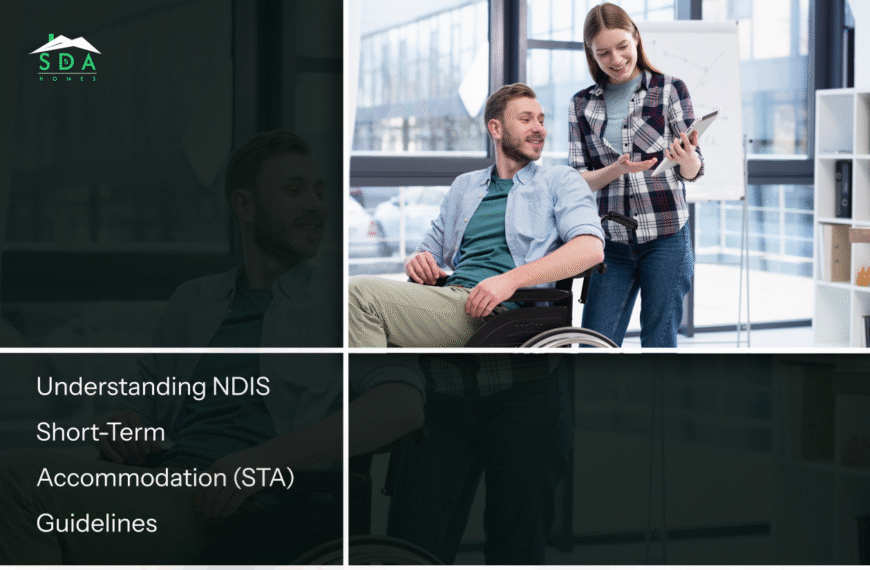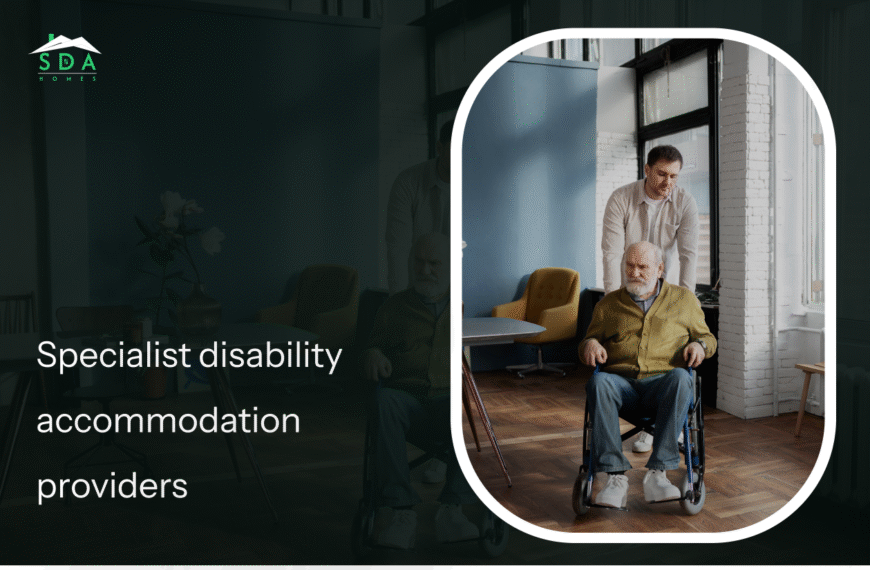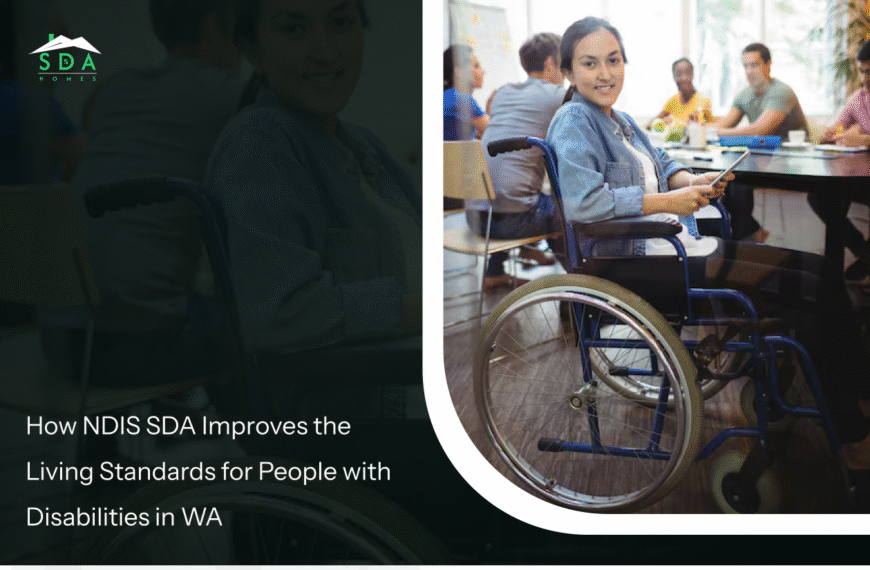Introduction
NDIS Specialist Disability Accommodation (SDA) offers tailored housing for people with significant support needs. It provides comfortable, safe, and suitable homes for people with disabilities.
SDA sets a standard that goes beyond regular housing. It ensures that people with high support needs get a home where they can live more independently. Ultimately, this benefits not just participants, but families, carers, and local communities who rely on accessible housing initiatives for a better quality of life.
In this guide, we break down SDA design types, eligibility, funding, compliance, and much more, keeping things straightforward and conversational.
Learn how these types of homes work, how to find the right fit, and where the future of disability accommodation in Australia is heading.
SDA Design Categories Explained
When it comes to disability accommodation design types, SDA homes are not one-size-fits-all. There are four primary types, each uniquely designed for a specific group of people with disabilities, ensuring their particular support needs are met.
Improved Liveability
- These homes feature clear signage, spacious areas, and thoughtful details to assist those with vision or sensory challenges.
- You’ll notice smooth layouts, strong color contrasts, and logical pathways designed for ease of use.
For example, participants will have access to wide hallways with bright, easy-to-follow markers.
Robust Accommodation
- These types of homes are built to be stronger and suit people who require a safe environment.
- You can expect reinforced walls, secure windows, and safe outdoor spaces in these housing units.
For example, these houses are designed for extra durability and low-stress living.
Fully Accessible
- These houses have no steps, wide doors, and accessible kitchens and bathrooms.
- It is best for those using wheelchairs or needing mobility support.
For example, participants will get roll-in showers, handrails, and an automatic door, which makes their daily moves around easy.
High Physical Support
- These types of homes come with top-level features such as ceiling hoists, backup power, and advanced tech.
- It is made for those needing extensive help every day.
For example, disabled people qualified for SDA will get access to remote-controlled lighting and hoists for movement around the house.
Each design reflects a commitment to giving every resident comfort, freedom, and peace of mind. The primary focus behind these accommodations is to improve the living standard of those who need it the most but are unable to get it because of their disabilities.
Eligibility Criteria for SDA Funding
SDA funding is not for everyone! It’s there for NDIS participants with the highest support needs. If you have major physical, sensory, or intellectual disabilities, you might meet the specialist properties funding eligibility criteria.
Specialist disability housing assessment includes looking at your daily care, how you manage at home, and whether ordinary housing can meet your needs.
NDIS participants applying for SDA will have to undergo a list of criteria, such as their age, level of impairment, and specific needs. After review, the NDIS decides if specialist disability accommodation is the right option for you. If yes, then which housing category will you come to, and how can it help you live with dignity and safety?
Navigating Compliance with the SDA Design Standard
Securing approval for an SDA home through the NDIS isn’t as simple as constructing it and moving in. It also involves making sure the property fulfills all the specific housing criteria. The disability home compliance checklist is absolutely essential for this:
- Providers follow requirements during construction, using certified materials and designs.
- Regular audits check that these types of homes consistently meet all standards for safety, function, and ongoing upkeep.
- Only homes that pass disability housing certification stay listed in the NDIS.
- Each provider is responsible for documenting enrollment, compliance, and handling NDIS audit requirements.
This system keeps these types of homes comfortable and safe, adapting as standards or residents’ needs change.
Understanding SDA Funding and Costs
Here’s how NDIS accommodation funding works:
- Most of the costs to build and set up SDA are funded by the government through the NDIS.
- Residents pay a capped rent, not the full cost, taking the pressure off families.
- Everyday expenses (food, bills) are separate from what these housing covers.
- Providers receive payments under SDA payment structures, which support property upkeep and improvements.
Good financial planning, including working with a reliable SDA provider, can help families and participants understand their options and budget effectively.
So, government disability finance takes care of the big stuff; the focus stays on letting residents live as easily as possible.
Choosing the Right SDA Home
Finding the perfect home is not rocket science; with the right resource, wise research, and perfect planning, you can find your type of accommodation at your preferred locations.
Here’s what you can do:
- Match your support needs to the property type. Use tools and advice from the NDIS.
- Select a location that allows you to stay close to friends, family, or essential support services. Consider future needs as well.
- Work with planners and use assisted housing search features to explore different accessible living options.
- SDA experts can give great advice, making it easier to find these types of homes across Australia that truly fit your lifestyle.
Always remember: you have choices and support available to you at your convenience from SDA Homes.
Recent Trends and Future Directions in SDA
Technologies are on the rise, and similar to every other sector and service, the world of NDIS is moving forward fast. Here are the highlights:
- SDA policy updates in Australia make homes more open and flexible every year.
- Smart-home technology, voice controls, and new building ideas are making innovative disability housing a reality.
- The NDIS constantly reviews trends, so expect fresh options and better outcomes in the future.
If you want to stay alert on SDA news, subscribe to our News and Latest Updates now!
Final Takeaway
Specialist Disability Accommodation is NDIS’s flagship housing offering. It gives people with disabilities, especially eligible participants, a chance to live in homes that truly work for them. It includes the right guidance so that everyone can find support to make the best possible choices.
Whether you want to discover more about SDA or find suitable accommodation in a preferred Australian location, the team at SDA Homes is always there to serve you. Reach out today for a one-on-one consultation!
Answering NDIS Specialist Disability Accommodation FAQs
1. How do I know if I’m eligible for SDA funding?
Ans: If you have very high support needs, ask your NDIS planner; they’ll help check your eligibility.
2. Who maintains the property and handles modifications?
Ans: Your specialist housing provider keeps the home in shape and makes any needed changes or upgrades.
3. Can participants choose their own SDA provider or dwelling?
Ans: Yes, you pick the provider and the special home that suits you.
4. What happens if needs change after moving into an SDA home?
Ans: If your needs change, talk to your planner; they’ll help you plan a move or adjust your supports.







